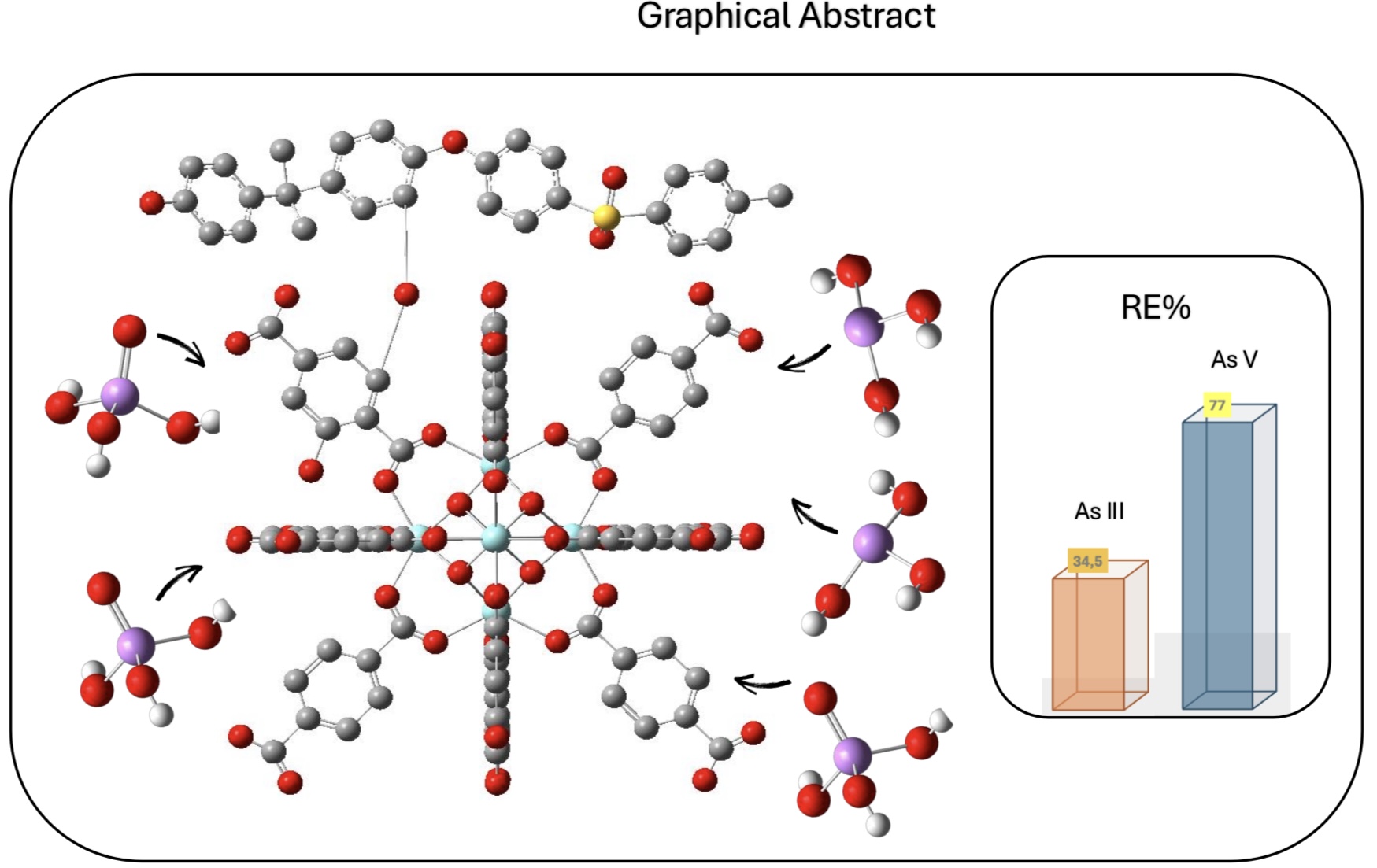Porous Polymers Based on PSU and PSU-TMA with Grafted Zirconium-Organic Moieties: Synthesis and Application for Removal of Arsenite and Arsenate Water Pollutants
Altmetrics
Downloads
8
Views
12
Comments
0
Submitted:
19 November 2024
Posted:
20 November 2024
You are already at the latest version
Abstract
Porous organic polymers (POPs), based on polysulfone (PSU) and covalently linked zirconium-organic moieties have been applied for the first time to Arsenic removal in wastewater. The synthesis involved anchoring a synthon molecule onto PSU, followed by MOF assembly and subsequent quaternization (QA) with trimethylamine (TMA). Two samples Zr-POP and Zr-POP-QA are characterized by NMR, FTIR, and titration. The efficiency of As uptake is revealed by ICP. The study is carried out at different pH (3, 7, and 12) to vary the charge of Zr-organic moieties and the charge of arsenite and arsenate species. Two concentrations (0.5 and 1 mM) of As (III) and As (V) are used. The results show that Zr-POP at pH 3 has a removal efficiency (RE%) of 77% for As (V), in agreement with the positive charge present in the Zr-framework at this pH. At neutral pH the As (III) sorption is also relevant. Zr-POP-QA at pH 12 shows, thanks to the positive charge on the ammonium moieties, a RE% of As (III) equal to 35%. The kinetic of processes, performed on the most promising system, i.e. Zr-POP at pH 3 for As(V), shows a plateau already after 8 hours with a second-order law. The regeneration of the material is also evaluated. According to the results, these materials are serious candidates in the removal of heavy metals in wastewater.

Željka Milovanović
et al.
,
2023
Marianela Batistelli
et al.
,
2023
MDPI Initiatives
Important Links
© 2024 MDPI (Basel, Switzerland) unless otherwise stated










